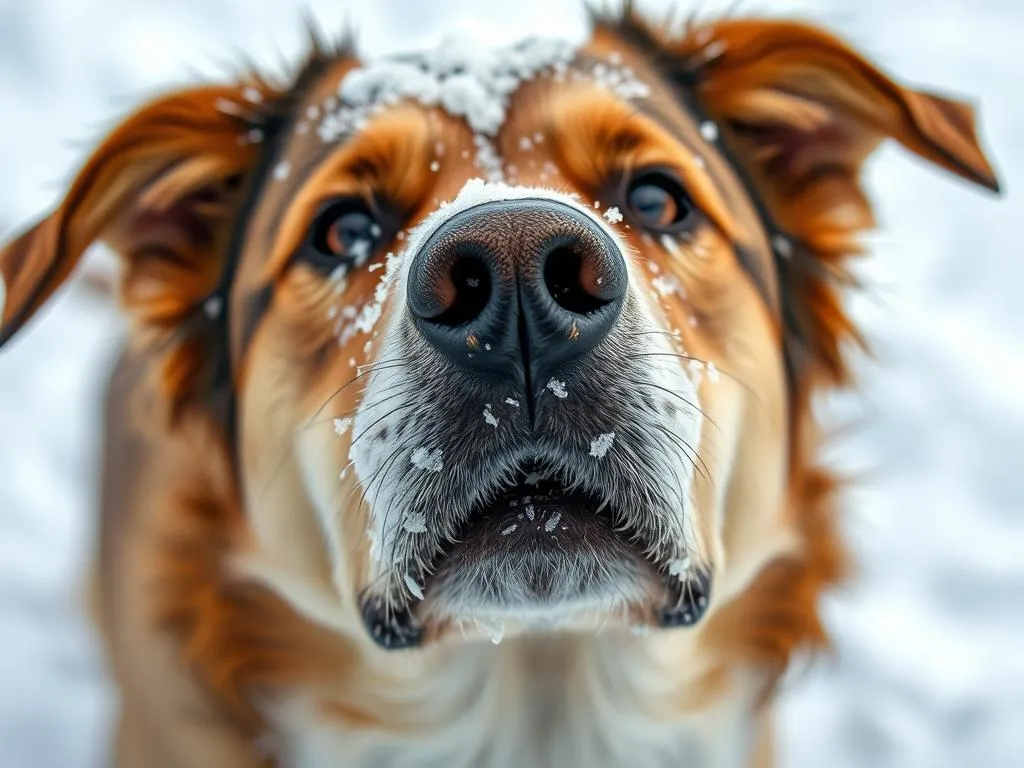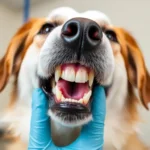
Introduction
In the world of canine health, one term that often raises eyebrows is dog snow nose. This condition, characterized by changes in the pigmentation of a dog’s nose, can be a source of concern and curiosity among pet owners. Understanding what dog snow nose is, its causes, and its implications is crucial for maintaining overall canine health.
Regular health checks play a significant role in ensuring our furry friends lead happy and healthy lives. Just as humans benefit from routine medical evaluations, dogs also require consistent monitoring to catch any potential health issues early on. From skin conditions to dental health, being informed about common health concerns can make a significant difference in your dog’s quality of life.
What is Dog Snow Nose?
Definition and Description
Dog snow nose, also known as “dudley nose,” refers to a condition where a dog’s nose changes color, often becoming lighter or pinker during the colder months. This phenomenon is most frequently observed in breeds such as Huskies, Labrador Retrievers, and Golden Retrievers. The change in pigmentation is generally temporary, typically returning to its original color as the weather warms up.
The physical characteristics of dog snow nose include a shift from dark pigmentation to a lighter hue, which can range from light brown to pink. This color change can sometimes be alarming to pet owners, but understanding its nature is key to alleviating concerns.
Causes of Dog Snow Nose
Several factors contribute to the onset of dog snow nose.
-
Environmental Factors: Exposure to cold weather, particularly snow and ice, is a primary trigger. The cold can affect the pigmentation of the nose, leading to temporary discoloration.
-
Genetic Predispositions: Certain breeds are genetically predisposed to developing dog snow nose. For instance, breeds with lighter pigments or those known for seasonal changes in fur may also show similar changes in nose coloration.
-
Other Potential Health Issues: While dog snow nose is generally benign, it can sometimes be associated with underlying health problems such as autoimmune diseases or allergies.
Understanding these causes can help pet owners differentiate between benign seasonal changes and more serious health conditions.
Common Myths About Dog Snow Nose
There are several misconceptions surrounding dog snow nose that can lead to unnecessary worry among dog owners.
-
Myth 1: It’s Always a Sign of Illness: One of the most common misconceptions is that a change in nose color is always indicative of a health issue. In reality, for many dogs, dog snow nose is a harmless seasonal adaptation.
-
Myth 2: It Can Lead to Serious Health Problems: While some health concerns may accompany changes in pigmentation, dog snow nose itself is not inherently dangerous.
-
Myth 3: It Affects Only Certain Breeds: While some breeds are more prone to this condition, any dog can experience temporary changes in nose color due to environmental factors.
By clarifying these myths, pet owners can approach the issue with a more informed perspective.
Symptoms of Dog Snow Nose
Visual Indicators
The most noticeable symptom of dog snow nose is the visual change in a dog’s nose. Normally dark and vibrant, a dog’s nose may take on a lighter hue, often resembling the color of snow or ice.
In comparison to a normal nose, which typically ranges from black to dark brown, a snow nose can appear pale or even pinkish. This change can also affect the texture, which may feel drier than usual.
Associated Symptoms
While dog snow nose primarily manifests as a change in coloration, it may sometimes be accompanied by other symptoms.
-
Dryness or Cracking: Some dogs may experience dryness or cracking of the nose, which could lead to discomfort.
-
Increased Licking: Dogs may lick their noses more frequently, possibly due to irritation or discomfort.
Monitoring these symptoms is crucial, as changes in the nose’s appearance can sometimes indicate underlying health issues.
Is Dog Snow Nose Harmful?
Understanding the Risks
One of the most pressing questions about dog snow nose is whether it poses any health risks. In most cases, the condition is benign and does not lead to serious health complications. However, it’s essential to be aware of potential underlying conditions that could cause changes in pigmentation.
Some dogs may experience dog snow nose as a symptom of autoimmune disorders or allergies. Therefore, while dog snow nose itself is not harmful, monitoring your dog’s overall health is vital.
When to Consult a Veterinarian
While most cases of dog snow nose are harmless, there are specific signs that warrant a visit to the veterinarian.
-
Persistent Color Change: If the change in pigmentation lasts beyond the winter months, it may be time for an evaluation.
-
Accompanying Symptoms: If your dog shows signs of discomfort, such as excessive licking, swelling, or a change in behavior, consult your vet.
-
Significant Changes in Texture: If the nose becomes excessively dry, cracked, or begins to bleed, it’s essential to seek professional advice.
Being vigilant about these signs can help ensure your dog stays healthy and happy.
Treatment and Management
Treatment Options
In most cases, dog snow nose does not require treatment. However, if it is accompanied by discomfort or other symptoms, there are various options available:
-
Moisturizers: Applying a dog-safe moisturizer can help alleviate dryness and cracking.
-
Dietary Adjustments: Ensuring that your dog has a balanced diet rich in omega fatty acids can support skin and coat health.
-
Veterinary Treatments: If an underlying condition is identified, your veterinarian may recommend specific treatments tailored to your dog’s needs.
Preventive Measures
Preventing dog snow nose largely revolves around maintaining overall dog health. Some effective strategies include:
-
Regular Grooming: Keeping your dog’s coat and skin healthy can contribute to overall well-being.
-
Proper Nutrition: A balanced diet can strengthen the immune system and improve skin health.
-
Seasonal Care: During winter, consider protective gear for outdoor activities, such as doggy booties and coats, to minimize exposure to harsh conditions.
By implementing these preventive measures, you can help mitigate the occurrence of dog snow nose.
Other Common Dog Health Issues
Skin Conditions
Skin issues are prevalent among dogs and can manifest in various forms, including allergies, infections, and parasites. Common symptoms include:
- Itching
- Redness
- Hair loss
Treatment options vary depending on the cause and may include medicated shampoos, dietary changes, or medications.
Respiratory Problems
Respiratory health is another critical area to monitor in dogs. Common issues include:
- Kennel cough
- Allergies
- Chronic bronchitis
Symptoms may include coughing, wheezing, or difficulty breathing. Timely veterinary intervention is crucial for effective management.
Dental Care
Dental health is often overlooked but is vital for overall canine health. Common dental issues include:
- Tartar buildup
- Gum disease
- Tooth decay
Regular dental check-ups and at-home care, such as brushing your dog’s teeth, are essential for preventing dental problems.
The Importance of Regular Veterinary Check-ups
Benefits of Regular Check-ups
Regular veterinary check-ups are fundamental for maintaining your dog’s health.
-
Preventive Care: Routine exams allow for early detection of potential health issues, making treatment more manageable.
-
Building a Health History: Keeping a comprehensive health record helps your veterinarian provide tailored care for your dog.
What to Expect During a Vet Visit
During a typical veterinary check-up, you can expect several procedures, including:
- Physical examination
- Vaccination updates
- Discussion of dietary and lifestyle choices
It’s also an excellent opportunity to address any health concerns or questions you may have about your dog.
Conclusion
Understanding dog snow nose is essential for any dog owner. While it is typically a benign condition influenced by environmental factors, being informed about its symptoms, potential risks, and management strategies can make a significant difference in your dog’s health.
Moreover, prioritizing regular health checks and being aware of other common health issues will go a long way in ensuring your furry companion remains happy and healthy. Stay informed and proactive about your dog’s health to provide them with the best care possible.









